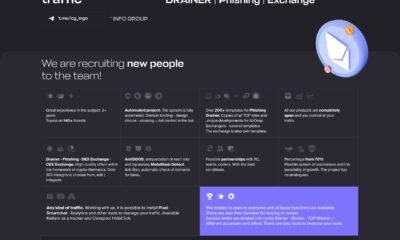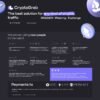Different firms employ various methodologies to smoothen their corporate functioning and business efficiency. Some focus on customer satisfaction; others look for the latest technologies available in the industry. The type of regulations a company sets for itself to improve sales and business transactions depends on the work environment, existing company resources, and future objectives of the company.
Some of the latest methodologies in demand right now are COBIT, ITIL, and TOGAF frameworks. Fundamentally, they are like guidelines that address specific issues an enterprise faces and needs solutions for. These solutions range from customer support, product applicability, technological progress, IT governance, innovation, and cybersecurity. In this article, we will go through these different methodologies and the scope of functionality that each of them possesses while dealing with securing precious data.
WHAT IS COBIT?
Control Objectives for Information Technologies (COBIT CERTIFICATION) is a governance solution for the vast information systems applied in a company. They include several domain-specific solutions in order to improve the way departments handle data with their tools. It comes packed with many practical resources and implementable methods to make sure firms get the best performances out of their existing capital. The guidelines are embedded with governance regarding information security, management objectives, and finding the optimal solutions in infrastructure design.
WHAT IS ITIL?
Information Technology Infrastructure Library (ITIL) is a set of rule books authored by specialists in the field that guide companies to make the best use of their IT resources. These best practices are scripted into several scripts that allow companies to make the right decisions when they are stuck in a dilemma. Recently the ITIL v3 framework has evolved to ITIL 4 under Axelos. It shifts the previously cherished goal of product quality to customer satisfaction and product servicing. Although there have been varying degrees of success with this change, they are developments in a constantly changing corporate habitat nonetheless.
WHAT IS TOGAF?
The Open Group Architecture Framework (TOGAF) has worked as an industry-standard over the years and has been recently updated to version 9.2 with added features and improved documentation. It is aimed at solving the issues with efficiency through innovation and thinking out of the box. TOGAF professionals are characterized by their zeal for newer methods applicable in adverse conditions, high adaptability, and interest in profitable ventures. They have higher chances of success in any potentially risky deal. TOGAF allows companies to extend flexibility into different issues in the firms, such as resource misutilization and cybersecurity.
APPLICATION IN THE REALM OF CYBERSECURITY
Cybersecurity is one of the major problem’s companies are facing these days. Data is always at risk, and firms face varying degrees of threats from hackers, malicious programs, liable employees, and insider breaches. It becomes imperative that companies take the help of professionals and information security experts. Since data breaches occur at critical points in production processes and program management, utilization of frameworks such as COBIT by Sprintzeal, ITIL, and TOGAF can be an effective tool in curbing data theft and corruption.
COBIT allows for greater accountability among the employees. This helps workers to be more responsible with the way they work with confidential information that belongs to the firm. Coupled with safe cybersecurity practices, this can put a cap on potential losses. It helps the firms reduce data recovery costs and maximize their profits. COBIT is a one-stop solution for all governance problems inside a company. When the administration works on issuing responsibility regarding their IT tools, employees tend to be careful.
ITIL framework helps improve customer service and product usability. It prioritizes the service value system and assigns credibility to the company. Many corporations such as Disney and Spotify have relied on ITIL to improve product delivery and service compliance history. By making the industry coverage more efficient, firms benefit from relying on last-minute hasty decisions, which makes data liable and prone to losses.
TOGAF reinforces the corporate infrastructure of the company through several techniques such as Architecture Development Method (ADM), partitioning of functionality, output repositories, and relying on the capability framework of the different resources. This allows for better usage of the company’s precious data and integration with other productivity methods such as Agile.
The type of guidelines a firm employs for its workers to follow depends on the objectives and project goals. If a company gives more importance to service quality, then they will certainly choose ITIL over anything else. At the same time, companies with an eye for efficient governance will prefer COBIT. It is important to allow room for any changes that might occur so that stakeholders can change the principal set of rules for the enterprise if need be.
Read also : ibommaweb .


















